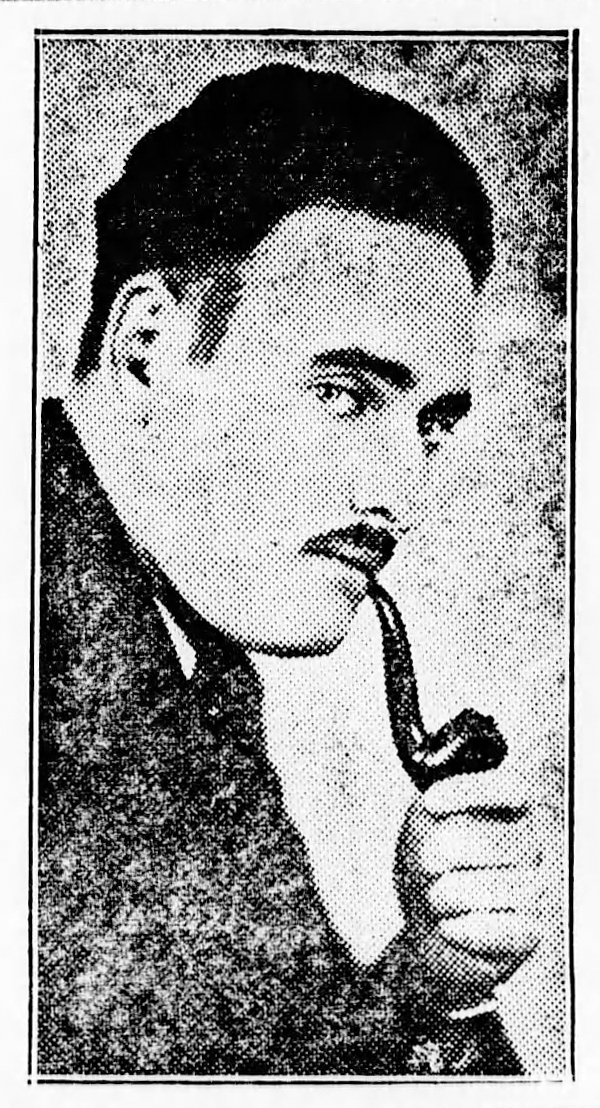Editor’s Note: Every month the cover of BATTLE ACES depicts a scene from a real combat actually fought in the War and a real event in the life of a, great ace. The series is being painted exclusively for this magazine by Frederick M. Blakeslee, well-known artist and authority on aircraft and was started especially for all of you readers who wrote us requesting photographs of war planes. In this way you not only get pictures of the ships—authentic to the last detail—but you see them in color. Also you can follow famous airmen on many of their most amazing adventures and feel the same thrills of battle they felt. Be sure to save these covers if you want your collection of this fine series to be complete.

The Friedrichshafen G.III Bomber
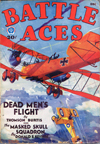 THE cover this month shows how a Friedrichshafen bomber was brought down by a Frenchman near Verdun. It was a big brute such as this that spelled the doom of Lufbury, America’s most spectacular ace.
THE cover this month shows how a Friedrichshafen bomber was brought down by a Frenchman near Verdun. It was a big brute such as this that spelled the doom of Lufbury, America’s most spectacular ace.
The huge ship appeared back of the American sector near Loul. Four fighting ships took the air to give it combat, but returned after expending their ammunition, reporting that it seemed impossible to damage it. The big bomber loafed along as unconcernedly as if it were an elephant with a swarm of mosquitoes at its heels. Then Lufbury obtained permission to try his hand. He took off and mounted above the dragon of the air, then swept down upon it. His machine gun is believed to have become jammed, for when nearly upon the German he swerved off. Almost at once he came back again, flashing by the Boche with his guns blazing. But still the German lumbered on unhurt. Again Lufbury returned to the attack. Suddenly the watchers below saw a line of fire burst from his machine, and the ship began to plunge earthward.
We all know the manner of Lufbury’s death. He had a horror of being burned, and always said that in the event of his machine catching fire he would jump. He was true to his word, for that is exactly what he did, from a height of about two thousand feet. However, this is a digression; let us return to the Friedrichshafen.
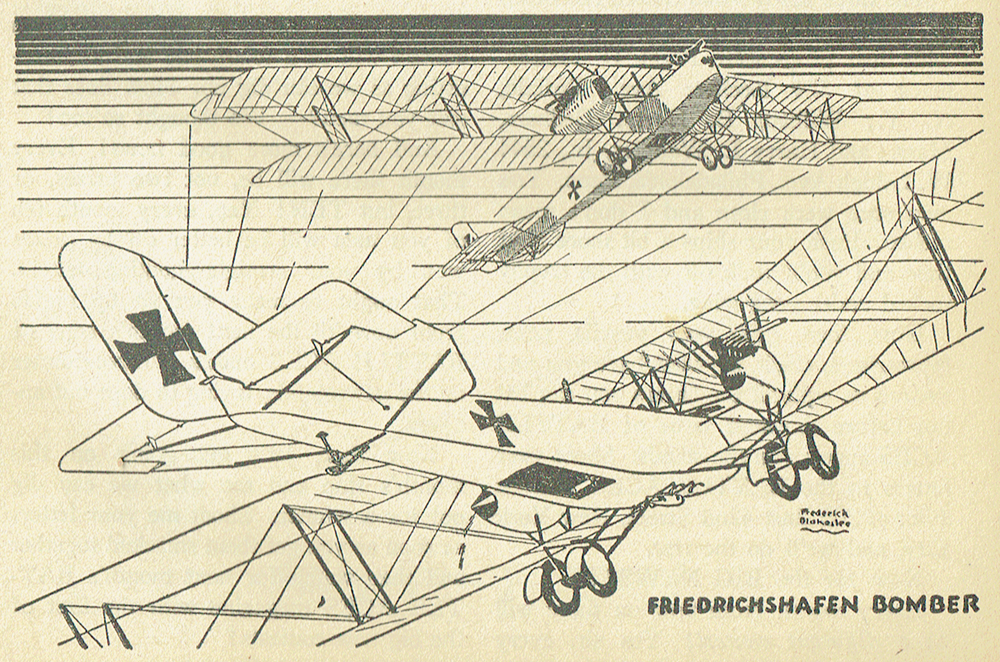
These machines were in the air what the battleship is in the sea, and about as dangerous to tackle. There was no blind spot except on the under part of the fuselage toward the bow, and it was extremely hard to maneuver for this position, due to the fact that in the bottom of the floor, just aft of the bomb racks, was a trap door from which a machine gun commanded a view downward and backward.
The weak point in all big planes had been the inability of the gunners to protect the ship from an attack underneath. The secret of the invulnerability of the Friedrichshafen was that, due to this trap door, the gunner could now protect the blind spot, making the accepted mode of an attack on a bomber not only very dangerous but almost useless. The guns aboard these planes commanded a field of fire that almost completely surrounded the ship.
The big red devil pictured on this month’s cover, however, was unlucky. It was returning from a bombing mission at early dawn. A French flyer on morning patrol spotted it and speeding along in the gloom that hung close to the earth, slowly mounted until directly behind the tail. Then with throttle wide open he dove, gaining tremendous speed. He zoomed up and in a flash was directly underneath, his guns blazing forth a deadly hail of lead. Then he stalled, fell away, and dived out of range.
What circumstances accounted for the fact that he was allowed to approach within range, is not known. It is presumed that the crew, for some reason, had lapsed their vigil and were feeling safe either because of the early hour of the morning, or because they thought themselves over Germany. At any rate, that one burst was enough. The big crate came down back of the lines near Verdun, very slightly damaged, and was hailed with much joy by the powers that he.
It would serve no purpose to give an exhaustive technical description of the Friedrichshafen. A few facts will suffice. Big ships as they were, they were considerably smaller than the Gotha, being 36 feet in length with a wing span of 66 feet. They were powered by two 225 h.p. Benz motors, one each side of the center and inclosed in ovoid bonnets. The ship weighed when loaded 6,960 lbs. Beside machine guns they each carried twelve high explosive bombs and seven incendiary bombs.
The cover and the drawing below will give you a very accurate idea of how the plane looked.

“Friedrichshafen Bomber” by Frederick M. Blakeslee (December 1931)
Next month’s cover will feature a CAMEL in deadly combat with a FOKKER. If you have been wanting an authentic picture in colors of a Camel machine, you will find it on the cover of the January issue. Not only that, but there is a real, gripping story behind the fight in which the ship is portrayed—the story of a valiant flyer who was willing to crash nose on into an enemy plane, willing to meet a flaming death, in order that he might save the life of his buddy. This will be the 8th in the series of actual war combat covers which Mr. Blakeslee is painting for you. If you do not have all of these pictures and would like them so that your series will be complete, send twenty cents for each magazine to Battle Aces, 205 E. 42nd St., New York City, and specify which issue or issues you desire. The planes illustrated so far have been: S.E.5; B.E. Fighter; R.E.8; Pfaltz Scout; Spad.
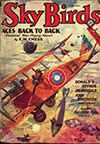 IT WAS a far cry from the early days of the war, when aviators were asked to drop bombs on hurriedly constructed Zeppelin hangars in northern Belgium, to the 1918 bomber with its aerial torpedo. In the early days airmen often made their own bombs of petrol cans wrapped with tarred rope which was designed to blast out hangars and then set fire to the remains. From those days bombing went through the 20-pounder stage, automatic racks, and eventually blossomed out with ships carrying single 550-pound missiles designed to fang their way through many feet of solid concrete before exploding. These were known as delayed detonation bombs.
IT WAS a far cry from the early days of the war, when aviators were asked to drop bombs on hurriedly constructed Zeppelin hangars in northern Belgium, to the 1918 bomber with its aerial torpedo. In the early days airmen often made their own bombs of petrol cans wrapped with tarred rope which was designed to blast out hangars and then set fire to the remains. From those days bombing went through the 20-pounder stage, automatic racks, and eventually blossomed out with ships carrying single 550-pound missiles designed to fang their way through many feet of solid concrete before exploding. These were known as delayed detonation bombs.





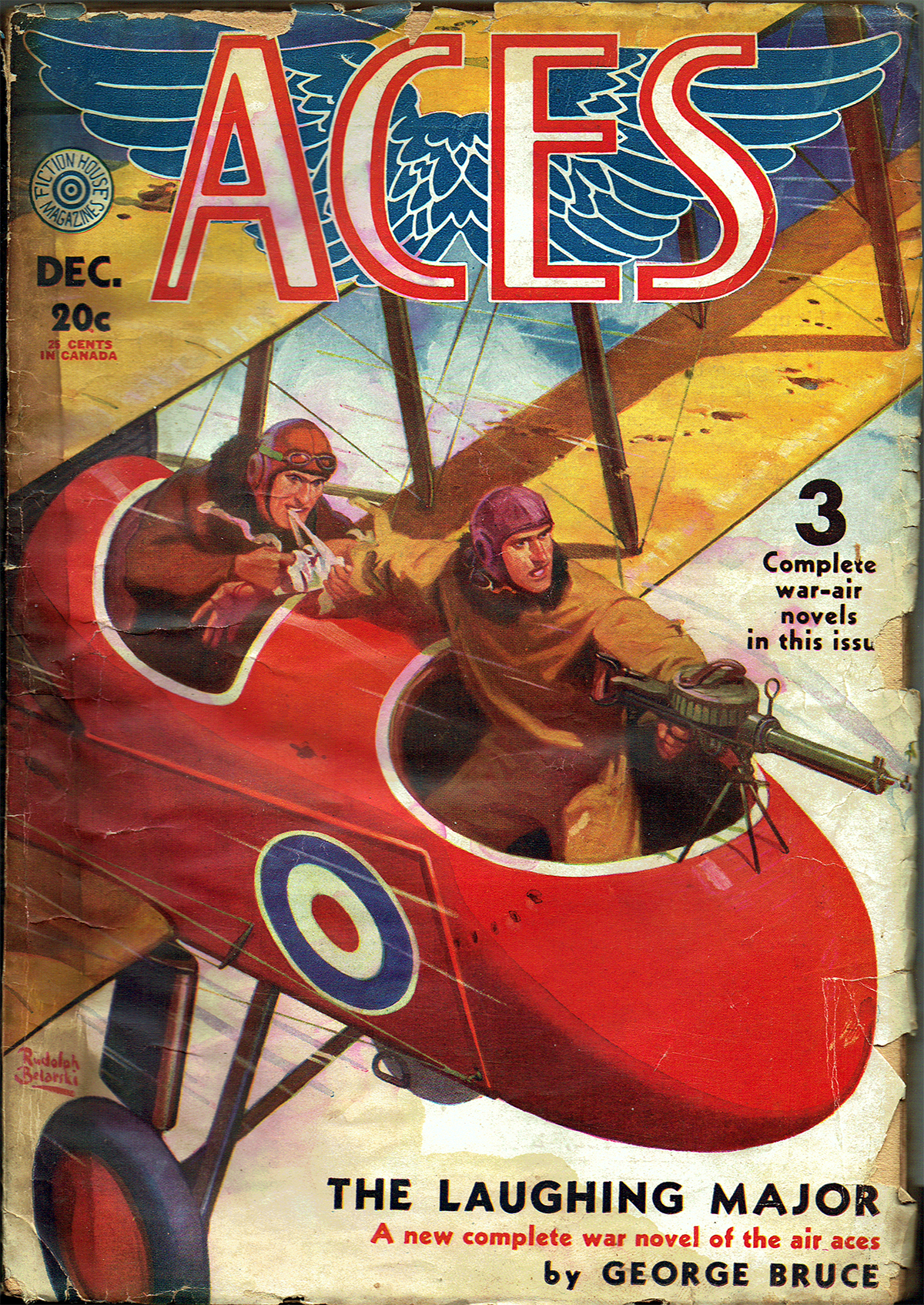 twelve stories of Christmas 1931, we have an excellent tale by E.W. Chess from the pages of the December 1931 Aces magazine!
twelve stories of Christmas 1931, we have an excellent tale by E.W. Chess from the pages of the December 1931 Aces magazine! 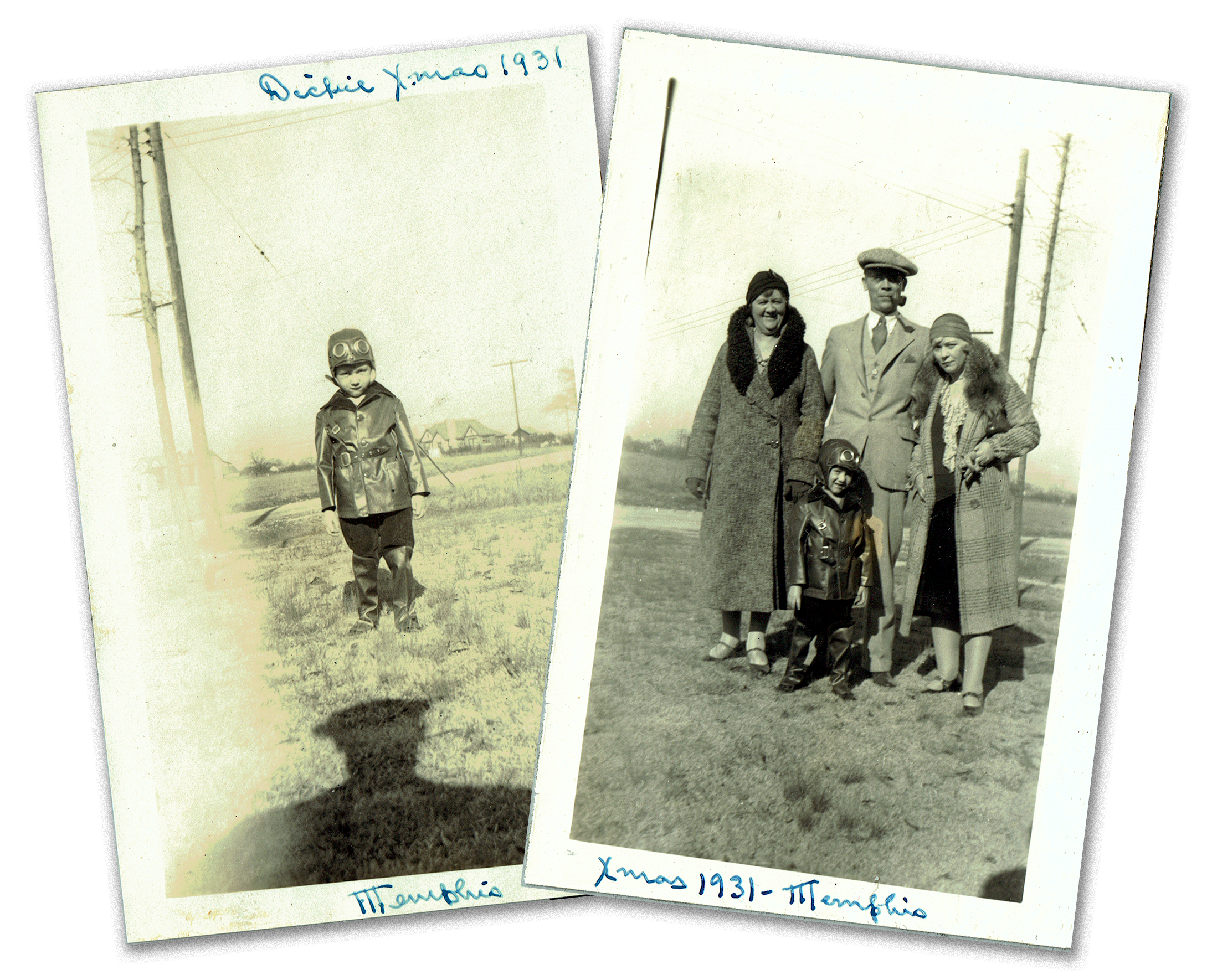


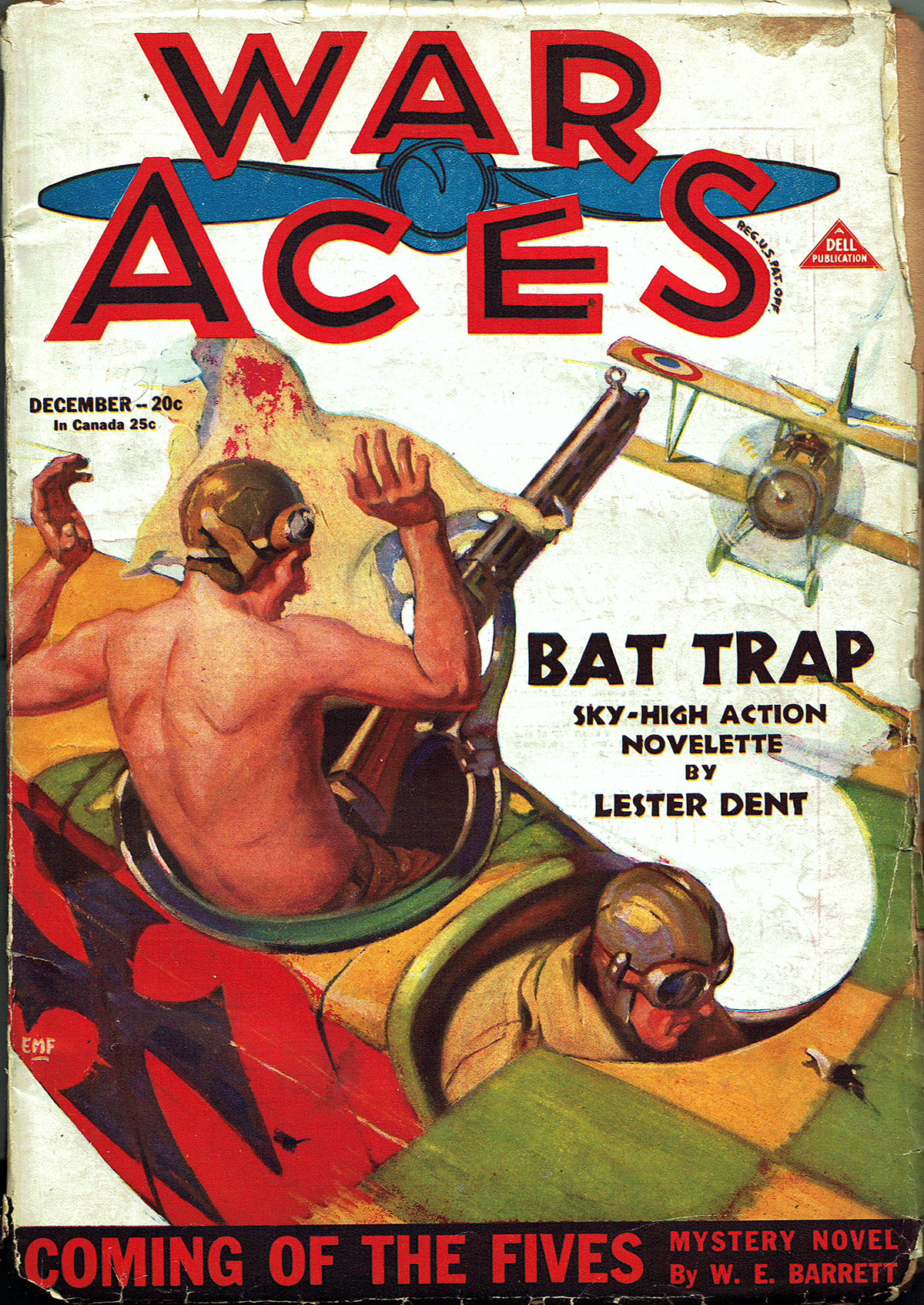

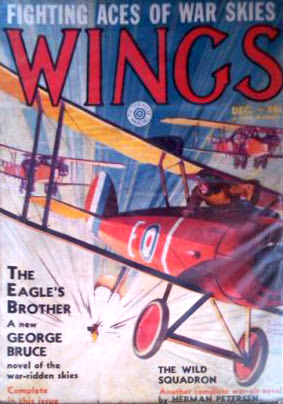
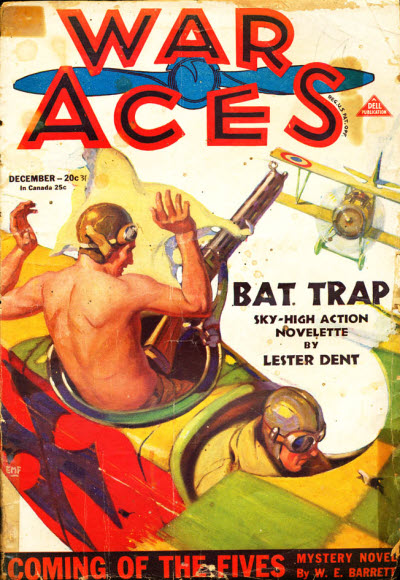 Mosquito Month we have a non-Mosquitoes story from the pen of Ralph Oppenheim. It’s a humerous tale of Lieutenant Sleepy Miller—so named because he could fall asleep anywhere at anytime—even in the middle of a war with bombs going off all around him. From the December 1931 issue of War Aces it’s “Lazy Wings.”
Mosquito Month we have a non-Mosquitoes story from the pen of Ralph Oppenheim. It’s a humerous tale of Lieutenant Sleepy Miller—so named because he could fall asleep anywhere at anytime—even in the middle of a war with bombs going off all around him. From the December 1931 issue of War Aces it’s “Lazy Wings.” remembered as the man behind
remembered as the man behind 